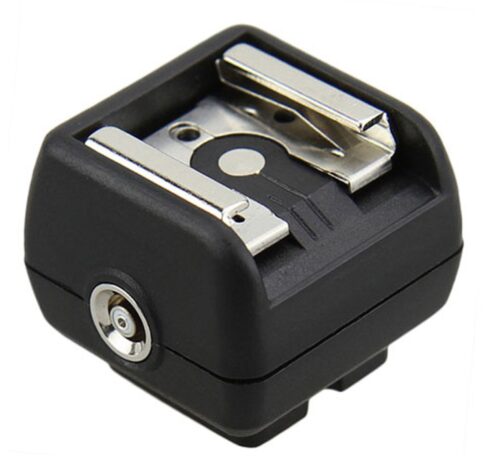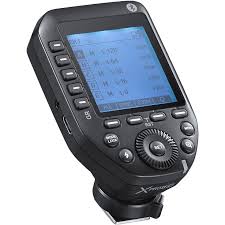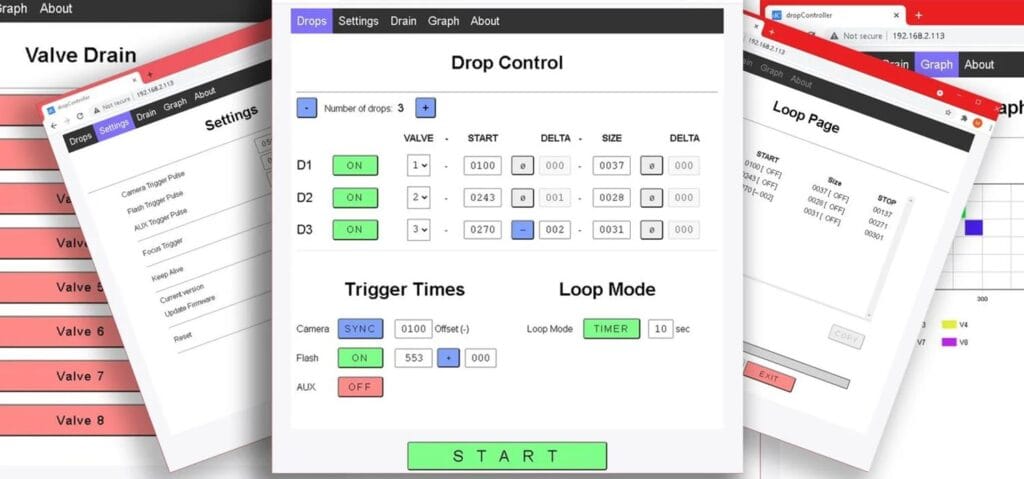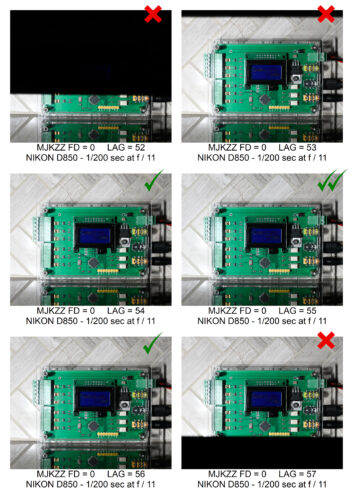The activation of the speedlights can be controlled via the camera or it can be controlled directly from the drop controller. If you wish to use the camera for control you will need to have a either a master speedlight or a wireless controller attached to the camera hot shoe either directly or with a hot shoe adaptor. This means that the flash will fire when the camera’s shutter is fully open. Some controllers recommend that if you are using this method it is best to set a slow shutter speed to avoid capturing just a black image or black bars. It is possible that the slow shutter speed may require you to work in low light to avoid capturing any ambient light.


For this reason I prefer to have the controller directly control the flash activation. This allows me to use the camera’s fastest shutter sync speed so that I can avoid any ambient light issues. However, this method requires entering the camera lag time into the controller or the software. When I used this method to find my shutter lag I used a MJKZZ controller to determine the time but the process would be similar for any controller, just different methods to enter the data into the software such as my current dropcontroller .


To find the exact lag setting I set the controller’s flash delay to “0” and with the flash connected direct to the controller I started taking a series of photos (of the controller) in increments of 5 milliseconds for the controller’s lag time setting. Once I started to get a photo with a black bar I changed the increment for the lag to just 1 millisecond until I found the ideal lag time. This was the value I entered permanently into the controller. When I tested my camera I had just 3 timing values that produced a full image and no black bars. I just used the middle value of 55 milliseconds
The only caveat was that I had to ensure my camera was always in same wake or pre-focus state. I was able to do this using either camera settings and later I used a controller cable that activated a pre-focus signal prior to the shutter signal.
There is websites that list camera lag times and that can provide a good starting point for confirming your exact time.
I know that many will find it easier to control the flash via camera because it is easy to set up but there is the possibility of changes in camera shutter speed that will alter the flash activation – and because the solenoid settings are isolated from the camera/flash timeline there can be different capture times. I just like the accuracy of connecting direct to the controller especially when setting up the synchronisation of all the solenoids.
I think you should revise this post.
Triggering the flash from the camera guarantees synchronization and allows the fastest shutter speeds. That would be the camera x-sync speed and if the camera allows it likely a bit faster because you are using low power short duration flashes.
The problem is variation (jitter) of the shutter lag time. In modern mirrorless cameras this can be 10’s of ms. I suspect mostly due to having to synchronize the shot with the frame rate of the EVF.
If you trigger the camera with camera triggered flash then shutter lag jitter becomes flash timing jitter. If you trigger the flash and pre-trigger the camera shutter for the maximum shutter lag then the shutter has to be open long enough to accommodate the minimum shutter lag. For example with an Olympus OM-1 1/20th is the fastest shutter speed I can use and annoyingly that requires a darker room.
Just measuring shutter lag when it jitters that much is difficult.
Thanks for your comment, however, I am unsure what needs to be revised.
My usual Nikon D850 settings are ISO 200; F11 & 1/200 (5 milliseconds). Also being in manual focus and in wake mode allows for a constant shutter lag time. I have always been able to take my waterdrop photos in my garage with window light with no ambient light issues.
The method I describe works very well with my camera and as I stated, because of certain reasons, some people (like yourself) may still need to use camera activated flash or work in a darker enviroment.
I am not familiar with your camera, but it seems like even when using camera activated flash you could experience >10 milliseconds vairiance between captures, which for me would be troublesome when trying to synchronise multiple drops and fountains. From what I have only just researched about your camera, I think I would use manual mode, mechanical shutter, manual focus and simulated optical viewfinder. Also disable high resolution mode and anti flicker mode. From my very brief and recent insight into the Olympus OM-1, this would get your camera close to the way my Nikon D850 allows me to avoid using a darkened enviroment.